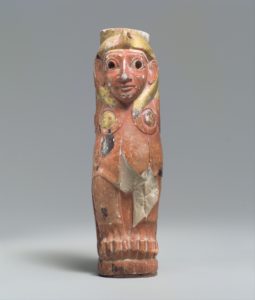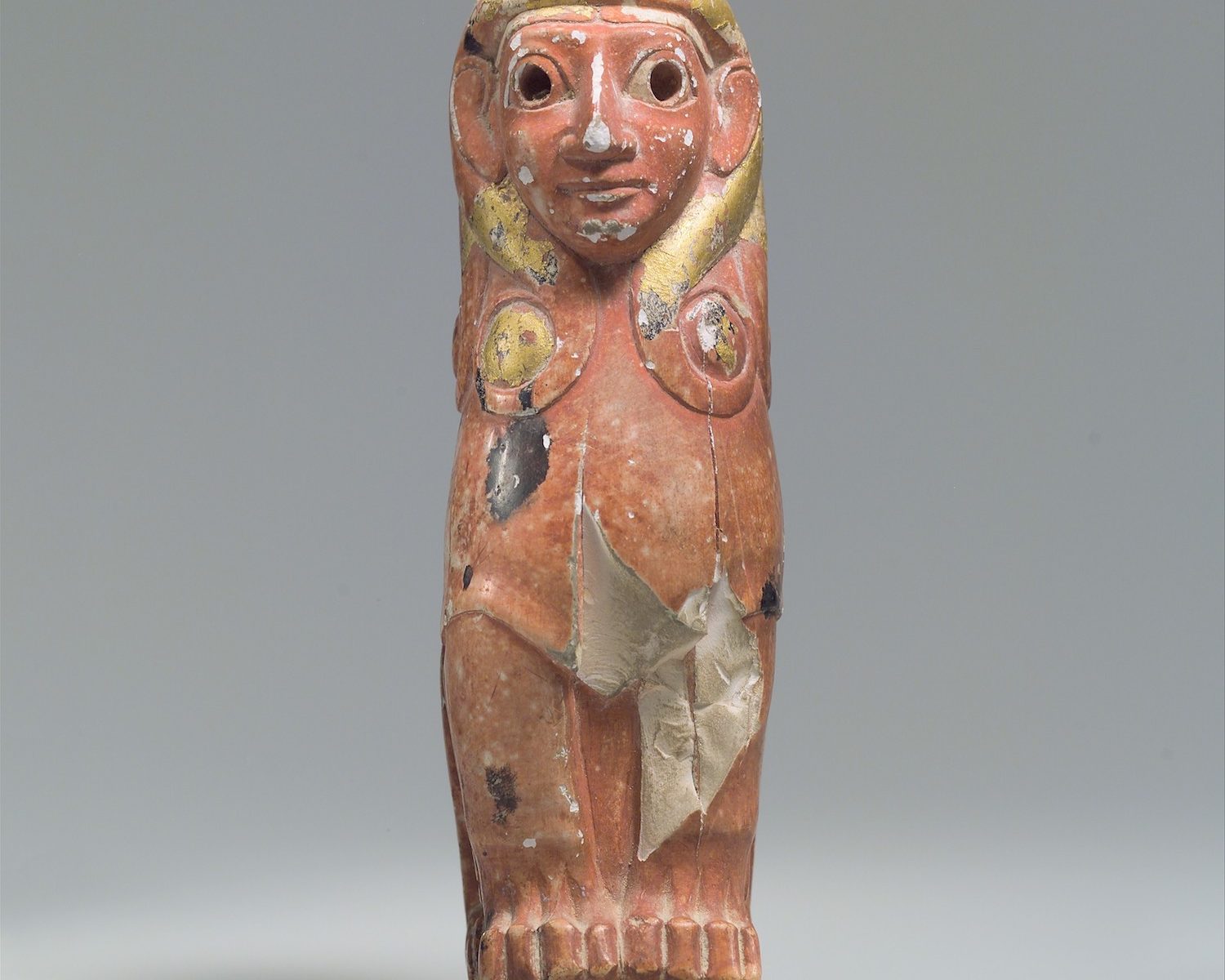Egyptianizing Female Sphinxes in the Mediterranean and Beyond during the Middle Bronze Age

The Egyptian Middle Kingdom produced a number of statues of female royal figures represented as sphinxes. The reason behind the popularity of this type of statue during the Middle Kingdom is unclear, but it has been argued that it emphasizes these women’s importance as the source of royal legitimacy for their husbands, or that they represented princesses who are associated with the daughter and eye of the solar deity. A major problem in understanding the meaning of these statues lies in the fact that the exact identities of some of these women, and their relationship to the king, are still unknown.
Egyptian royal statues, including female sphinxes, were found outside of Egypt, a good example being the Sphinx of a Princess Ita, which was discovered at the site of ancient Qatna, in Syria. How these statues left Egypt and why is still the subject of debate.
Female sphinxes with Egyptian influences, such as ‘Hathoric wigs’ and the royal uraeus, have been found in central Anatolia, examples being a set of gilded ivory furniture legs, probably found at Açemhoyuk and dating approximately to the 18th century BCE (contemporary with the Egyptian Middle Kingdom). How this Egyptian iconography reached this area is unclear, but one of the arguments is that the source was Syrian-style cylinder seals with Egyptian imagery.
The research project focuses on Egyptianizing representations of female sphinxes in Anatolia and other parts of the Mediterranean and the Near East during the Middle Bronze Age. The iconography and its meaning will be analyzed, and the possible methods of transfer—commercial or political—will be investigated.
